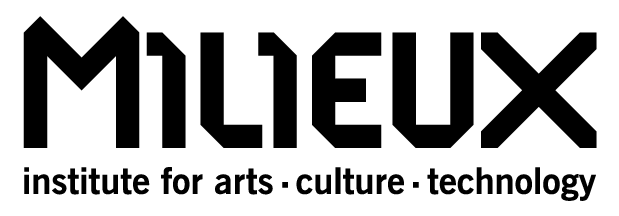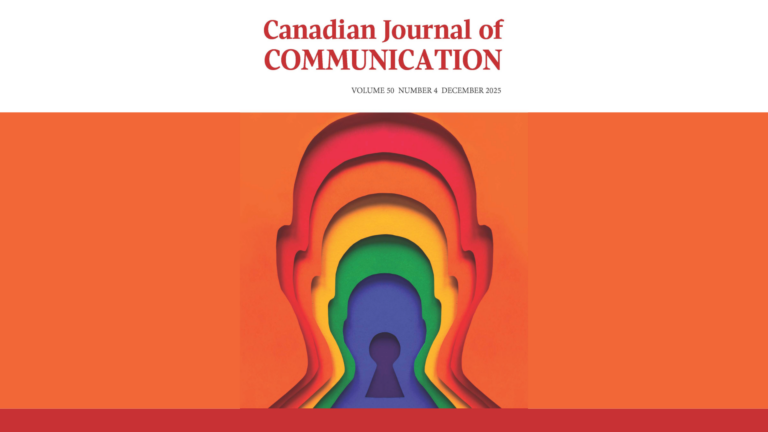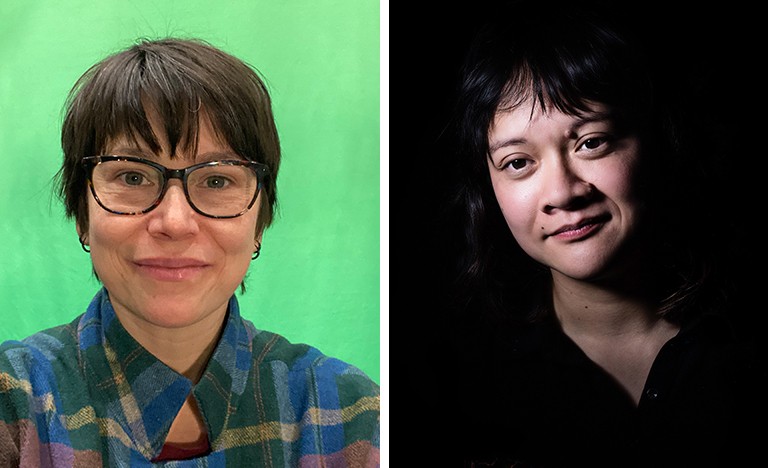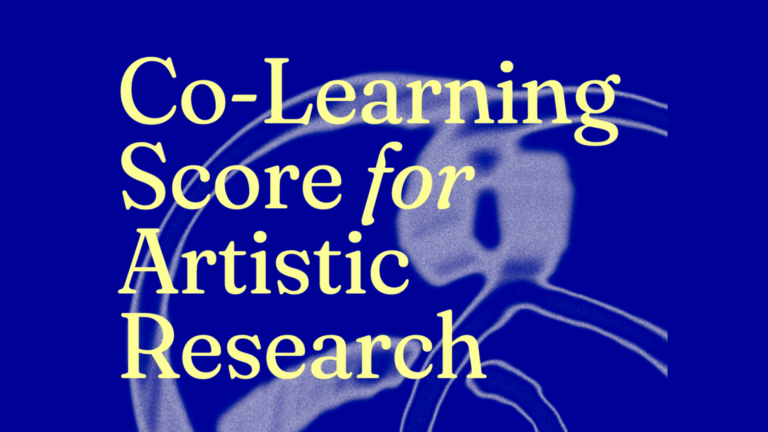How can we engage our senses to tackle wicked problems non-reductively?
Two of our student members — Suzanne Kite and Navid Navab — were featured on a panel at the International Symposium on Electronic Art 2020 that sought to answer this question. The panel, Sensory Cosmologies, also included artist and historiographer Jonathan Sterne, artist and curator Nina Czegledy and Dr. Lina Dib. These “sensory cosmonauts” were invited to discuss whether the difference between living and nonliving is a matter of degree with no beginning and no end from a range of perspectives.
If you missed the event, or attended and can’t get enough, we archived some of the incredible ideas that were exchanged in a live Twitter thread! We’ve unrolled and edited thread below, which includes additional resources related this area of inquiry. Follow us at @Milieux_news.
A thread, by Brennan McCracken
The Sensory Cosmologies group—@kite_kite_, @jonathansterne, Navid Navab , Nina Czegledy (@OCAD @kmdi) and @LinaRoseDib—is presenting a panel at #ISEA2020! We’ll be live-tweeting as panel discusses sensory problem-solving and attempts to “breathe chaos into order” #MilieuXISEA

Navab offers an initial provocation to the panel: “How can our transformations—material, social or otherwise—best preserve the life of things? And what is life to you, what feels lively?”
@LinaRoseDib: Liveliness begets relationships…”we are not existing in isolated systems.” She says her work as an artist speaks to this sense of relationality.
“I’m not trying to create an entire living system… but rather create work that lures the idea of a living system” –@LinaRoseDib

@kite_kite_: My work “understands the body as … being in a constant state of transformation.”
Kite says she is working through the idea of a body as transformative object, or as something that transforms sensory through the act of listening. For Kite, this understanding has ethical implications for human and nonhuman sentience.
These notions of liveliness, ethics and transformation shaped her work on a position paper on Indigenous Protocol and Artificial Intelligence: indigenous-ai.net/position-paper/ via @_abtec_
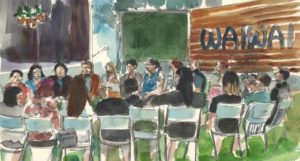
@jonathansterne mentions his upcoming book Diminished Faculties: A Political Phenomenology of Impairment. Thinking through the sensory means we must necessarily think with the ethics and limits of sensory engagements.
Navab: Artists and “sensory cosmonauts” turn rich concepts to specific conditions of engagement that imply forms of sentience. How do you imagine yourself into different sense-making assemblages? Can you connect people to the sense-making apparatus of something else?
@LinaRoseDib: Sensory imagination isn’t about being didactic. Instead, it’s about drawing attention to how sensing happens within networks and ecologies of relation.
Dib’s work explores ways to connect people with their agency through play and encounter. In THRESHOLD (2017), a large-scale video installation of the gulf shore responds to the actions of those viewing it, invoking questions of sensuous agency and responsibility.

@kite_kite_: Agency and sentience are themselves shifting—we are constantly in and in relation with the tools of both sensing and art-making. “I want to be in relation with the computer… to put pressure on the idea of tool.”
Navab builds on @kite_kite_‘s thinking and invites @jonathansterne to talk about the cultural (dis)placement and (dis)embodiment of sensory experience.
Sterne talks about how sensing is encoded into #AI and suggests there is an “agnosticism” to how these technologies sense.
What, @jonathansterne asks, are the implications of reducing sensory experience in culture—music, art—to a flattened “content”?
Navab: How might #AI better connect with its sensory conditions, and how might we shift our understanding of what “intelligence” is?
Navab: the work of future-making means we will always encounter the limits of our systems—technological, sensory, ethical.
Czegledy: introducing analog technologies often help us delimit these systems, or at least can help us see things from another perspective.
@jonathansterne: the most essential technologies in #AI are nothing new! AI relies principally on massive amounts of data run through 20th century statistical routines. Taking stock of such facts help us more critically represent and understand tech.
This obfuscation by newness is a problem, @jonathansterne suggests: it can obscure the material conditions within which tech is designed, made and used.
@kite_kite_: This is only one symptom of an “entire world-building logic of colonialism.” Her decolonial perspective on #AI and sensory studies asks that we consider the being of everything that contributes to our tech: the materials, the land, the workers, etc.
An audience member asks how to emphasize relationality without emphasizing utility.
@jonathansterne: We should hold onto utility outside of its capitalist meaning: as a ground for care and stewardship. We need to think “utility for what and for whom.”
Navab and Czegledy wrap up by thanking the participants, audience and #ISEA2020 organizers for a wide-ranging discussion.
We’ll echo their thanks to our “sensory cosmonauts” @kite_kite_, @jonathansterne, Navid Navab, Nina Czegledy and @LinaRoseDib ? #MilieuXISEA #ISEA2020
